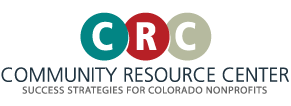Section One: Coronavirus State & Local Fiscal Recovery Funds (SLFRF) Overview
Overview:
The Coronavirus State & Local Fiscal Recovery Funds, or SLFRF, is a funding mechanism available to state, local, territorial, and tribal governments to support their response to and recovery from the pandemic. Through the American Rescue Plan, the SLFRF provides $350 billion to governments across the country with the resources needed to:
- Fight the pandemic and support families and businesses
- Maintain vital public services
- Build a strong, resilient, and equitable recovery
Funding Source And Allocations
SLFRF Funding Source: The American Rescue Plan Act of 2021, is a $1.9 trillion federal economic stimulus bill that was signed into law in March 2021 to support a national recovery from COVID-19 and to address the economic recession. ARPA established the $350 billion Coronavirus State Fiscal Recovery Fund & Coronavirus Local Fiscal Recovery Fund, which combined created the Coronavirus State & Local Fiscal Recovery Funds (SLFRF).
SLFRF National Allocations:
- $195 billion for states
- $130 billion for local governments
- $20 billion for tribal governments
- $4.5 billion for territories
SLFRF in Colorado:
- Just over $6 billion in SLFRF monies were appropriated to Colorado.
- The state’s portion of these funds is $3.8 billion, and the portion for local governmentsin Colorado is $2.3 billion.
Uses
Uses: SLFRF funds must be used for one of the following four categories, but governments have substantial flexibility in terms of what these categories need for their communities:
- To replace lost public sector revenue
- To respond to the far-reaching public health and negative economic impacts of the pandemic
- To provide premium pay for essential workers
- To invest in water, sewer, and broadband infrastructure
Eligibility: The US Treasury makes direct payments of SLFRF monies to government recipients, which are either states, local governments, tribal governments, or territories. Recipients may pass-through SLFRF monies to nonprofit organizations, which are then considered sub-recipients of the funds. The US Treasury created a portal, where all eligible governments have requested their allocations, and will report their progress.
- Who is a recipient? Government – local, state, territory, or tribal
- Who is a subrecipient? Public or private organizations with experience in state and federal grant management
- Who is a beneficiary? An “end user”
Final Rule
The SLFRF Final Rule: The SLFRF Final Rule implements the Coronavirus State Fiscal Recovery Fund and Coronavirus Local Fiscal Recovery Fund established under the American Rescue Plan Act. The Final Rule addressed feedback provided by communities regarding the Interim Rule, and allows for broader flexibility and greater simplicity to address COVID-19 recovery and the ongoing economic recession. The SLFRF Final Rule implements the Coronavirus State and Local Fiscal Recovery Fund and contains information about the rules, eligibility, and reporting requirements of this funding opportunity.

